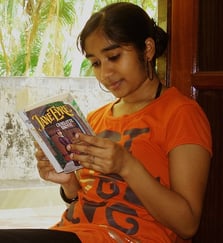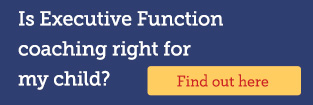About a month ago I attended a relative’s 60th birthday party where many guests brought delicious homemade  items. In true party-goer spirit I proceeded to try nearly every dish on the table, often discussing with the chefs how they were made.
items. In true party-goer spirit I proceeded to try nearly every dish on the table, often discussing with the chefs how they were made.
Four days later I was standing in aisle 9 at my nearest grocery store, thinking back to the delicious items I’d sampled and feeling motivated to recreate a few. I could remember the sweet vermouth chicken had, of course, sweet vermouth in it, but I failed to recall if she used raw mushrooms or cream of mushroom soup. I reminisced about the coconut macaroons, but fretted over whether she said coconut flour was the key, or maple syrup. So I did what any person who doesn’t have cell service in the grocery store does: I bought all of the items just in case and trekked home. My still unused cream of mushroom can tells me this was not the best approach.
It reminded me of the students I work with and how they often make a similar tactical error by not planning for an essay as they read. Using my own cautionary tale as an analogy, I urge students not to leave out one of the first steps to writing a paper: tracking quotes.
Reading Effectively to Prepare for Writing a Paper
Students may or may not have a culinary interest, but they can totally relate. They are often required to read a book and, once they’ve finished it, they are asked to write a paper. And that paper requires quotations. Ugh. Students often tell me that much of the stress writing gives them is linked to the fact that it feels like a very large, new task. They’ve diligently read the book. They’ve discussed key scenes in class. They’ve taken reading quizzes. They can recite major themes and point out major symbols. But after all that work they still aren’t really done because there’s another enormous assignment ahead: the essay.
If only students would record and reflect upon quotes as they read them (and if only I had written down the recipes as I sampled them) kids would spend a lot less time hunting and pecking back through chapters, and I’d have saved a lot more money at the store. I've found a great way to tackle one of the key steps to writing a paper, keeping track of notable quotes.
Tracking Quotes Efficiently
The following chart is designed to help students track quotes that stand out to them while they’re reading and reflect on them in the moment. In the leftmost column, students are prompted to write the first few words of a quote. This tactic is intended to reduce the feeling that this is “extra” work (the teacher already gave them reading questions, for crying out loud). Then, they write the page number for quick reference later on. The third column takes a bit of work that will be worth it later. Here they write about why they chose the quote. Perhaps it’s a scene that represents a theme discussed in class. Perhaps it shows character development. Perhaps it completely changes what they thought about in the previous chapters. Whatever their thoughts are, they can jot them down as they go. Even if all they do is create a categorical “#hashtag” that’s a win; it can help them sort quotes quickly and easily later on.
| “First Words” of Quote | Page # | My Thoughts/Reactions/Analysis/#Hashtag |
|---|---|---|
|
|
To be sure, this doesn’t seem like a very dazzling organizer. But the true beauty is revealed when it comes to paper-writing time. It can simplify the process of crafting a thesis statement in response to a prompt by letting the quotes and their #hashtags guide students to a thesis statement, not vice versa.
Let’s imagine that a student is given the task of developing a thesis about the theme of Green Eggs and Ham, and they have completed the three column chart below:
| “First Words” of Quote | Page # | My Thoughts/Reactions/Analysis/#Hashtag |
|---|---|---|
| “I do not like green eggs and ham. I do not like them, Sam-I-Am.” | 1 |
#resistant He is pretty confident about his position |
| “I will not eat them in a house, I will not eat them with a mouse, I will not eat them in a box, I will not eat them with a fox, I will not eat them here or there, I will not eat them anywhere.” | 3 |
#resistant, #confident He is trying to be really clear about the conditions under which he will refuse to eat. I think he’s pretty much covered all the options, but some are unrealistic. I mean, who eats with foxes? Maybe he’s going too far? |
|
“You do not like them. So you say.Try them! Try them! And you may.”
|
8 |
#Pushy, #NotListening, #PeerPressure Says he “hears” what he’s saying about the meal but still pushes him to try them anyways. |
For most of us who know this story, the theme is clear: don’t knock something until you try it. But maybe that’s too obvious. When this student looks back at the selected quotes there are two with the same #hashtag: #resistant. Immediately, the student might be able to think about the role that having a resistant attitude plays in the book, developing a unique position: being resistant can help you set clear boundaries with others. The third quote could further inspire this line of thinking since the student’s #hashtags note the role of peer pressure - further encouraging the need for our main character to set boundaries with others. As a teacher and an Executive Function coach, I can tell you that it’s pretty cool when a student comes up with a different point of a view. Tracking quotes along the way is an effective time-saving step that allows students to see what they were thinking while reading, thus opening up an easy-to-access thesis statement. Bonus? The supporting evidence is right there for students to copy and paste into the paper.
Does your child need strategies to read and write more effectively? Click below to find out how Executive Function coaching can help.

Brittany Wadbrook is a senior level Executive Function coach for Beyond BookSmart. She joined the company in 2012 and is based in our Boston branch. Brittany is a frequent contributor to Beyond BookSmart’s Executive Function strategies blog, providing content around Executive Function skills related to test preparation, anxiety around writing and getting organized. Brittany earned her Bachelor’s in English and her Master’s in Secondary Education at Quinnipiac University. While there, she became a certified Master Level Writing Tutor by the College Reading and Learning Association and spent three years working for the Quinnipiac's Learning Center. Additionally, Brittany earned a second Master’s degree in Composition and Rhetoric at the University of Massachusetts Boston. After graduating, she became a full-time lecturer at the university where she currently teaches first-year composition to a diverse classroom culture including English Language learners and nontraditional students from a variety of academic backgrounds.

